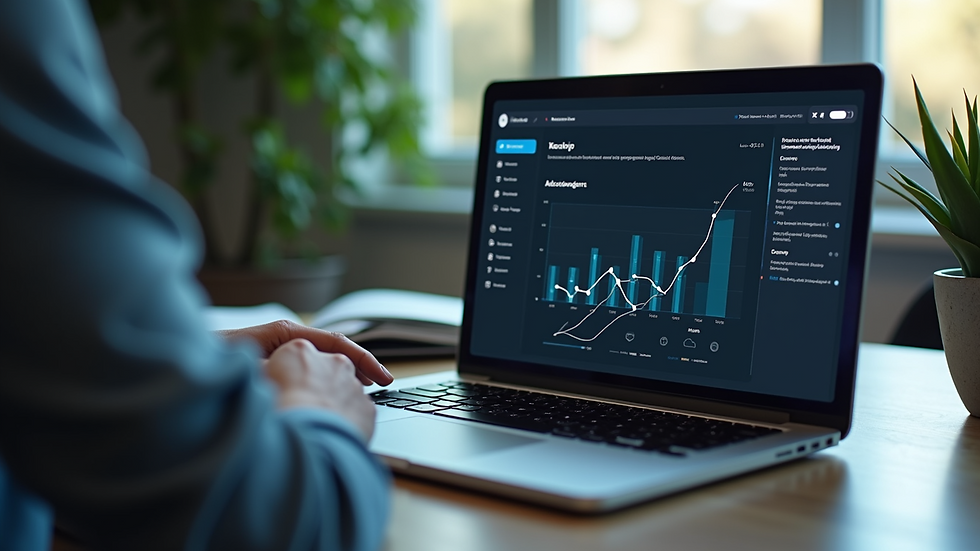Maximize Efficiency with AI: Essential Tips
- Douglas Silas
- Nov 3
- 4 min read
Artificial intelligence (AI) is no longer just a futuristic concept. It is a practical tool that can help you save time, reduce errors, and improve productivity in many areas of your life and work. If you want to get the most out of AI, you need to know how to use it effectively. This post shares essential tips to help you maximize efficiency with AI, whether you are a beginner or already familiar with AI tools.

Understand Your Needs Before Choosing AI Tools
The first step to using AI efficiently is to identify the tasks or problems you want to solve. AI tools come in many forms, from chatbots and virtual assistants to data analysis platforms and automation software. Each tool has strengths and limitations.
List your daily tasks and challenges.
Determine which tasks take the most time or cause the most errors.
Research AI tools that specialize in those areas.
Choose tools that fit your workflow and budget.
For example, if you spend hours sorting emails, an AI email assistant can prioritize messages and suggest replies. If data analysis overwhelms you, AI-powered analytics can highlight trends and insights quickly.
Start Small and Build Confidence
Jumping into complex AI systems without experience can lead to frustration. Begin with simple AI applications that offer clear benefits and easy setup.
Use AI-powered calendar apps to schedule meetings and reminders.
Try voice assistants for quick information or setting timers.
Experiment with AI writing tools to draft emails or reports.
As you grow comfortable, gradually add more advanced AI tools. This approach helps you learn without disrupting your routine.
Customize AI to Fit Your Workflow
Many AI tools allow customization to better suit your specific needs. Taking time to adjust settings can improve accuracy and usefulness.
Train AI models with your data when possible.
Set preferences for notifications and alerts.
Integrate AI tools with other software you use daily.
For instance, customizing an AI chatbot to understand your industry terms will make conversations more productive. Linking AI scheduling tools with your email and calendar ensures seamless coordination.
Use AI to Automate Repetitive Tasks
One of AI’s biggest advantages is automating repetitive, time-consuming tasks. This frees you to focus on higher-value work.
Automate data entry and report generation.
Use AI to monitor social media or news for relevant updates.
Set up AI workflows for customer support queries.
Automation reduces human error and speeds up processes. For example, AI can scan invoices and enter data into accounting software without manual input.
Combine AI with Human Judgment
AI excels at processing large amounts of data and performing routine tasks, but it cannot replace human creativity, empathy, or critical thinking.
Use AI to gather information and generate options.
Apply your judgment to make final decisions.
Review AI outputs regularly to catch mistakes or biases.
This balance ensures AI supports your work without taking control. For example, an AI tool might suggest marketing strategies, but you decide which align with your brand values.
Keep Learning and Stay Updated
AI technology evolves rapidly. Staying informed about new tools and features helps you maintain efficiency.
Follow trusted AI news sources and blogs.
Join online communities or forums focused on AI.
Attend webinars or workshops to deepen your skills.
Regular learning helps you spot opportunities to improve your workflow with AI.
Protect Your Data and Privacy
Using AI often involves sharing data with third-party services. Protecting your information is essential.
Read privacy policies before using AI tools.
Use strong passwords and two-factor authentication.
Limit the data you share to what is necessary.
Being cautious prevents data breaches and misuse of your information.
Measure AI’s Impact on Your Productivity
To understand if AI is truly helping, track your performance before and after implementation.
Set clear goals for what you want AI to improve.
Use metrics like time saved, error reduction, or output quality.
Adjust your AI usage based on results.
For example, if an AI tool reduces your email response time by 30%, you know it adds value.
Collaborate with AI in Teams
AI can enhance teamwork by improving communication and task management.
Use AI project management tools to assign and track tasks.
Employ AI transcription services for meeting notes.
Share AI-generated insights to inform group decisions.
This helps teams stay organized and aligned, boosting overall efficiency.
Avoid Overdependence on AI
While AI is powerful, relying on it too much can cause problems if the system fails or makes errors.
Maintain manual skills for critical tasks.
Have backup plans if AI tools are unavailable.
Regularly review AI outputs for accuracy.
This approach ensures you stay in control and can handle unexpected situations.
Maximizing efficiency with AI requires thoughtful selection, gradual adoption, and ongoing management. By understanding your needs, customizing tools, automating routine tasks, and combining AI with your judgment, you can unlock significant productivity gains. Keep learning, protect your data, and measure your progress to make the most of AI’s potential. Start small, stay curious, and let AI support your goals without replacing your expertise.


Comments